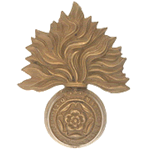Commemorated: | |||
| 1. Memorial: | Guillemont Road Cemetery, Guillemont | IX. J. 6. | |
| 2. Book: | The (1921) Masonic Roll of Honour 1914-1918 | Pg.116 | |
| 3. Memorial: | The (1940) Scroll - WW1 Roll of Honour | 40C GQS | |
Awards & Titles: | |||
Early Life :
Son of James and Alice Balshaw. Native of Lancashire (Weaste, Manchester).In 1911, he had started to make his career in London and was recorded as a Boy Clerk in the General Register Office of the Civil Service.
Resident at Thames Ditton in 1916
Education & Career :
Civil Service clerk at the Admiralty (1916)
Service Life:
Campaigns:
- The First World War 1914-1918, World-wide.
| Unit / Ship / Est.: 13th Battalion London Regiment (Kensington Btn) |
1/13th (County of London) Battalion (Kensington) August 1914 : at Iverna Gardens. Part of 4th London Brigade, 2nd London Division. Moved on mobilisation to Abbotts Langley. 4 November 1914 : left the Division and landed at Le Havre. 13 November 1914 : came under command of 25th Brigade in 8th Division. 20 May 1915 : transferred to GHQ Troops and formed a composite unit with 1/5th and 1/12th Bns. Resumed identity 11 August. 11 February 1916 : transferred to 168th Brigade in 56th (London) Division. |
| Action : The Battles of the Somme 1916 |
The Battle of the Somme 1st July - 18th November 1916 is inevitably characterised by the appalling casualties (60,000) on the first day, July 1st 1916. Having failed to break through the German lines in force, and also failed to maximise opportunities where success was achieved, the battle became a series of attritional assaults on well defended defence in depth. The battle continued officially until 18th November 1916 costing almost 500,000 British casualties. German casualties were about the same, and French about 200,000. The Somme could not be counted a success in terms of ground gained or the cost, but it had a strategic impact as it marked the start of the decline of the German Army. Never again would it be as effective whilst the British Army, learning from its experience eventually grew stronger to become a war winning army. The German High Command recognised that it could never again fight another Somme, a view that advanced the decision to invoke unrestricted submarine warfare in an attempt to starve Britain of food and material, and in doing so accelerated the United States declaration of war thus guaranteeing the eventual outcome. 287 Brethren were killed on the Somme in 1916.
Detail :
He was killed in action on Saturday, September 09, 1916. The Kensingtons were in support of the attack of the 168th Brigade on Combles on the Somme. It seems likely that Cecil BALSHAW was one of the casualties as a result of German shell fire. He is buried in Guillemont Cemetery with 5 other masonic brethren. Sources Tom Thorpe - Historian 13/London Regiment CWGC Official History Military Operations 1916 Vol II
Masonic :
| Type | Lodge Name and No. | Province/District : |
|---|---|---|
| Mother : | Lancastrian No. 2528 E.C. | London |
Initiated | Passed | Raised |
18th January 1916 | - | - |
Source :
The project globally acknowledges the following as sources of information for research across the whole database:
- The Commonwealth War Graves Commission
- The (UK) National Archives
- Ancestry.co.uk - Genealogy, Family Trees & Family History online
- ugle.org.uk - The records of the United Grand Lodge of England including the Library and Museum of Freemasonry
Additional Source:
- Founder Researchers : Paul Masters & Mike McCarthy
- Researcher : Bruce Littley

